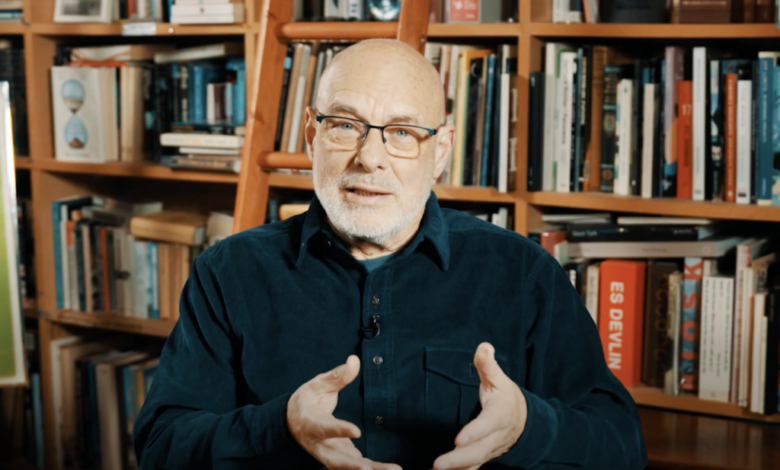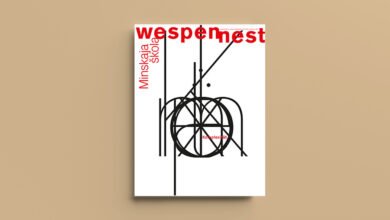Brian Eno Explores What Art Does in a New Book Co-Written with Artist Bette A

Brian Eno was thinking about the purpose of art a decade ago, as evidenced by his 2015 John Peel Lecture (previously featured here on Open Culture). But he was also thinking about it three decades ago, as evidenced by A Year with Swollen Appendices, his diary of the year 1995 published by Faber & Faber. This year, that same house is bringing out What Art Does: An Unfinished Theory, a new book on that very subject written by Eno, in collaboration with the artist and novelist Bette Adriaanse, better known as Bette A. It deals with the questions Eno lays out in the video above: “What does art do for us? Why does it exist? Why do we like art?”
These matters turn out to have preoccupied Eno “since I was a kid, really,” when he first got curious about a “biological, psychological explanation for the existence of art” — a drive not so readily followed, it seems, by young people today. Eno relates a conversation he had with an acquaintance’s fifteen-year-old daughter, who said to him, “I wanted to go to art school, actually, because I really love doing art, but my teacher said I was too bright for that, so I should go for science subjects.” He sees it as “the death of a culture, when you take the brightest young people and stop them from thinking about a huge area of human activity.”
Clearly times have changed since Eno’s youth, when art school could be a gateway to making a permanent mark on the culture. With What Art Does, Eno and Adriaanse set about creating a book that could easily be read by a bright teenager — or even her teacher — and consequently clarify that reader’s thinking about the importance of art. Eno has been discussing that subject for quite some time, and to Adriaanse fell the “thankless task” of reading through his many writings, lectures, and interviews in search of material that could be distilled into a single, pocket-sized book.
Eno clarifies that What Art Does is not an explanation of the whole of art, nor does it represent a definitive answer to the question implied by its title. It’s more important to him that the book expands the swath of human endeavor that its readers consider to be art. “Creativity is something that is born into humans,” he says, and the goal is “reawakening that, saying to people, ‘You can actually do it. Whatever it is, it’s your thing, you can do it.’ I like to say, it’s everything from Cézanne to cake decoration.” As “the place where people experiment with their feelings about things” and come to understand those feelings, art can happen anywhere, from the painter’s atelier or musician’s studio to the hair salon and the bakery: all settings, Eno’s fans would surely agree, that could benefit from the occasional Oblique Strategy.
Related content:
Brian Eno on Why Do We Make Art & What’s It Good For?: Download His 2015 John Peel Lecture
Eno: The New “Generative Documentary” on Brian Eno That’s Never the Same Movie Twice
Brian Eno’s Beautiful New Turntable Glows & Constantly Changes Colors as It Plays
Brian Eno’s Advice for Those Who Want to Do Their Best Creative Work: Don’t Get a Job
Brian Eno on Creating Music and Art As Imaginary Landscapes (1989)
David Byrne Gives Us the Lowdown on How Music Works (with Neuroscientist Daniel Levitin)
Based in Seoul, Colin Marshall writes and broadcasts on cities, language, and culture. His projects include the Substack newsletter Books on Cities and the book The Stateless City: a Walk through 21st-Century Los Angeles. Follow him on the social network formerly known as Twitter at @colinmarshall.




